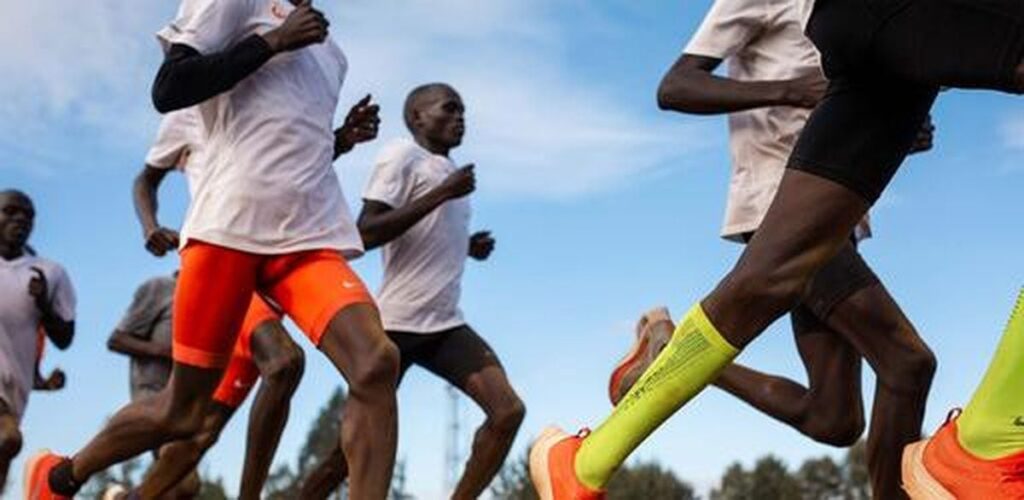China’s Growing Marathon Culture: A Closer Look
On March 23, 2025, China’s marathon culture reached new heights during what was dubbed “Super Marathon Day”. This remarkable event featured over 20 marathons nationwide, showcasing the increasing excitement for long-distance running across the country. A notable highlight was the Wuhan Marathon, which raised its participant cap to 40,000—a significant 10,000 increase from the previous year. With a staggering 450,000 applicants vying for a spot, the acceptance rate plummeted to just 8.8 percent. For many, securing a place in this prestigious marathon is a challenging endeavor.
Among those eager to race was Yang Jun, a dedicated athlete from Beijing, who shared his joy at finally obtaining a spot after five unsuccessful attempts. “I had applied five times before and finally got in through the supplementary draw this year,” he explained. His participation reflects not just a personal achievement but also a broader trend that is reshaping communities across China. According to the China Athletics Association, the number of road races surged to 749 in 2024, drawing in over seven million runners—an increase of one million from the year prior.
Conditions during the Wuhan Marathon proved favorable for elite competitors, including Ethiopian runners Asefa Mengstu Negewo and Guteni Shone Imana, who shattered marathon records in their respective categories. On the domestic front, Chinese marathon star He Jie also made headlines by finishing the race in an impressive time of two hours, 10 minutes, and 29 seconds, setting a new national record. “I wasn’t in my best condition after my recent Tokyo Marathon, but the cool and rainy weather allowed me to enjoy the race,” He shared subsequent to his accomplishment.
While elite athletes pushed boundaries in pursuit of new records, many amateur participants focused on personal goals rather than simply finishing times. Chen Weifen, a runner from Shandong Province, completed the Wuhan Marathon in a commendable two hours, 35 minutes, and 50 seconds, making her the fifth fastest female runner from China. “This was not my best performance, but I felt no regrets. My main aim now is to enjoy the race atmosphere in different cities,” she noted, showcasing the transformative experience many runners undergo.
The boom in marathon participation is fostering a significant economic impact as well. With the rising interest in running, there is a noticeable increase in spending on running gear. A runner from the Guangxi Zhuang Autonomous Region, Luo Fuyuan, shared that he spent around 2,299 yuan (approximately 320 U.S. dollars) on apparel and accessories in preparation for the Wuhan Marathon. “Once you’re in, expenditures on entry fees, gear, and travel become part of the experience,” he remarked, further underscoring the financial boost for local economies.
In terms of economic influence, the Wuhan Marathon alone generated over 1.17 billion yuan from around 71,000 tourists, with a total economic impact nearing 2.98 billion yuan—a notable 40.2 percent increase from the previous year. “The marathon boom and increase in sports gear consumption are natural reflections of rising incomes and a growing focus on fitness among the Chinese populace,” explained Jing Yan, a professor at Wuhan Sports University. This trend is indicative of a broader fitness culture in the nation.
Beyond personal and economic benefits, marathons hold cultural significance as they serve as both competitive events and promotional showcases for cities. The Wuhan Marathon perfectly coincided with the cherry blossom season, enhancing the scenic appeal of the route. Participants remarked on the breathtaking cherry blossom-lined roads, with Li Zhengyue saying, “The scenery and cheers from spectators kept me going, leaving me with a great impression of the city.” This aspect of marathons is increasingly recognized, with cities across China utilizing these events to promote tourism.
Marathon events create economic perks ranging from six to seven billion yuan for host cities, with mid-sized events like the Zhengzhou Marathon contributing around 1.46 billion yuan to local industries. “Cities should tailor marathon events to their strengths rather than adopting a one-size-fits-all approach,” a report by the General Administration of Sport advised, emphasizing the potential for sustainable race cultures in smaller towns.
As marathon culture continues to thrive in China, the implications stretch beyond health and fitness to include economic growth and community spirit. China’s commitment to running nurtures individual achievements while strengthening urban identities and fostering international relations through sport. The momentum driving this movement is poised to reshape not only the running community but also the cultural landscape across the nation.
